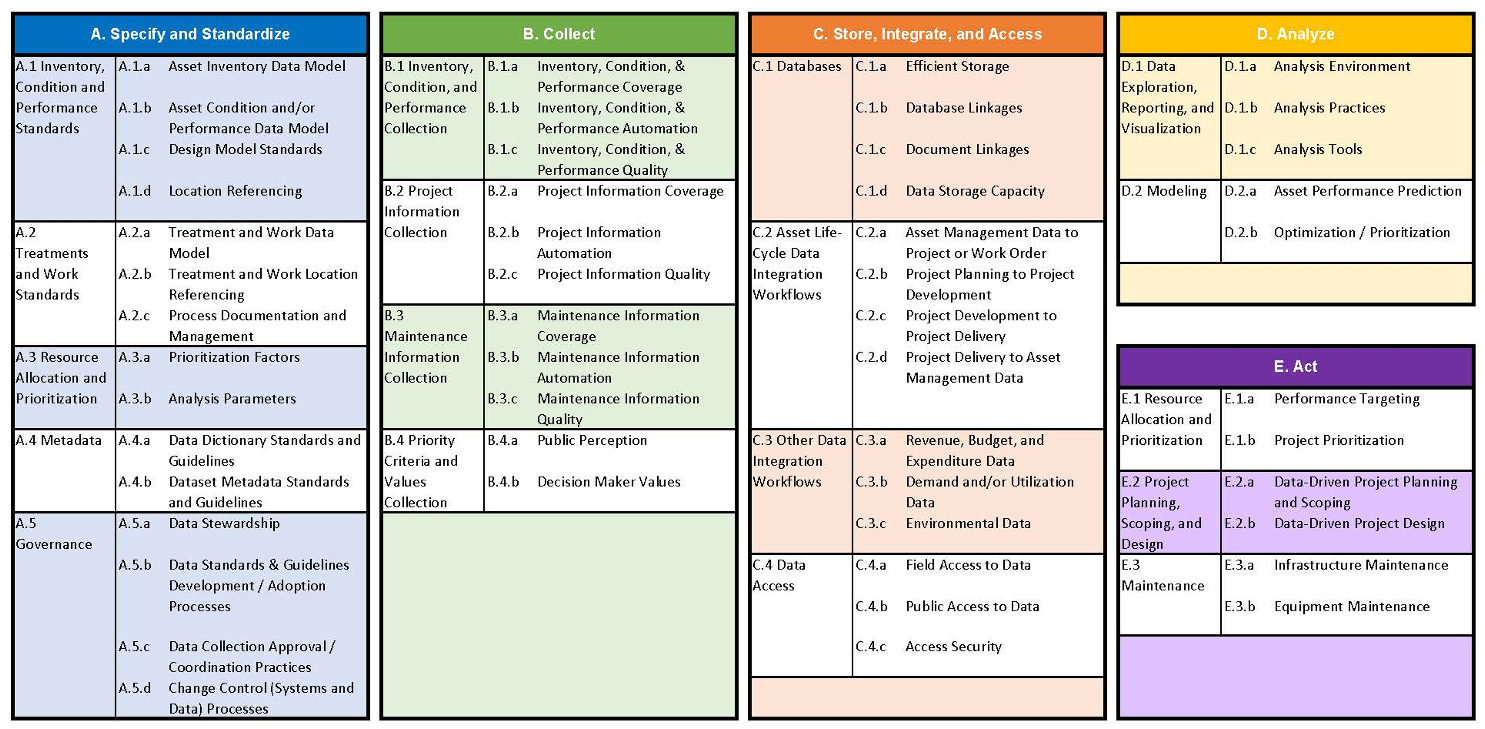Outcome:
Share context and establish a self-assessment meeting schedule with the assessment team. Ensure participants are prepared for the upcoming self-assessment activities.
Instructions:
Once the assessment team has been engaged and the commitments of individual participants secured, hold a kickoff meeting.
The facilitator should:
- Provide a high-level overview of the process and upcoming activities of the group.
- Detail the role of the facilitator to
- Record, summarize, and share group consensus and notes.
- Guide the group activities.
- Explain individual roles sharing expectations and desired perspectives from each individual participant in the team.
- Review key guidebook content (such as the guidebook framework and element-level response templates) used during assessment and improvement identification activities.
- Share participant “homework” will be required for detailed self-assessment and improvement identification meetings.
- Establish a meeting schedule based on participant availability and the recommended meeting duration and frequency.
- Introduce the digital support tool highlighting key contents, usefulness in preparation for upcoming meetings, and encouraging individual review after the meeting.
Additional Supporting Guidance:
Meetings should be kept to a maximum of 90 minutes with typically 1-2 meeting per week. This allows for sufficient preparation and avoids participant fatigue.
With proper preparation and facilitation, a small group should expect to be able to complete self-assessment and improvement identification with approximately 10 minutes of discussion per element, allowing assessment of one Area in a typical meeting.
Given the wide range of perspectives on the team, the facilitator should acknowledge that, where agreement cannot be reached across all participants, the facilitator will have to make a final decision for the purposes of the effort, and that other views or perspectives will be captured in the detailed notes.
At the end of the kickoff meeting, the facilitator should identify when the first assessment meeting will be held, and communicate which guidebook sections should be reviewed in preparation for that discussion.
The technical framework is developed around the data life-cycle, which for the purposes of this guidance is broken down into five (5) Areas. Each data life-cycle area is further organized into several Sections and their individual Elements.

This Area supports the understanding of the needs and full costs of asset inventory, condition and performance, treatment, and work history data. This Area also addresses the documentation of data meaning, derivation, and quality, and the establishment of governance structures and processes and associated stewardship roles and responsibilities. This Area is subdivided into fifteen individual elements, grouped into five associated sections:
- Section A.1 – Inventory Condition and Performance Standards
- Section A.2 – Treatment and Work Standards
- Section A.3 – Resource Allocation and Prioritization Standards
- Section A.4 – Metadata Standards
- Section A.5 – Governance
This Area explores TAM related data collection processes and practices, tools and technologies, and quality as delivered with respect to existing data standards.
This Area is subdivided into eleven individual elements, which are grouped into four associated sections:
- Section B.1 – Inventory Condition and Performance Collection
- Section B.2 – Project Information Collection
- Section B.3 – Maintenance Information Collection
- Section B.4 – Priority Criteria and Values Collection
This Area addresses data availability across the enterprise and the elimination of redundant and duplicative data. Specific asset life-cycle process areas, as well as external data and process areas, are identified for data standardization and integration in order to streamline business processes and improve decision-making. The Area is subdivided into fourteen individual elements, which are grouped into four associated sections:
- Section C.1 – Databases
- Section C.2 – Asset Life-Cycle Data Integration Workflows
- Section C.3 – Other Data Integration Workflows
- Section C.4 – Data Access
This Area examines decision-support tools, techniques, and practices that facilitate development of actionable information and insights to support decision-making. It is subdivided into five individual elements, which are grouped into two associated sections:
- Section D.1 – Data Exploration, Reporting and Visualization
- Section D.2 – Modelling
This Area covers data informed TAM practices, exploring asset life-cycle management through resource allocation and prioritization, project planning, scoping, and design, and maintenance decision-making. It is subdivided into six individual elements, which are grouped into three associated sections:
- Section E.1 – Resource Allocation and Prioritization
- Section E.2 – Project Planning, Scoping and Design
- Section E.3 – Maintenance
This Chapter shares supporting guidance and context for each Area and Section within this framework, to supplement and support detailed element-level practice benchmarks and potential improvement recommendations. Figure 3-2 provides a representation of the complete data life-cycle framework, comprised of 5 Areas, 18 Sections, and 51 Elements.
